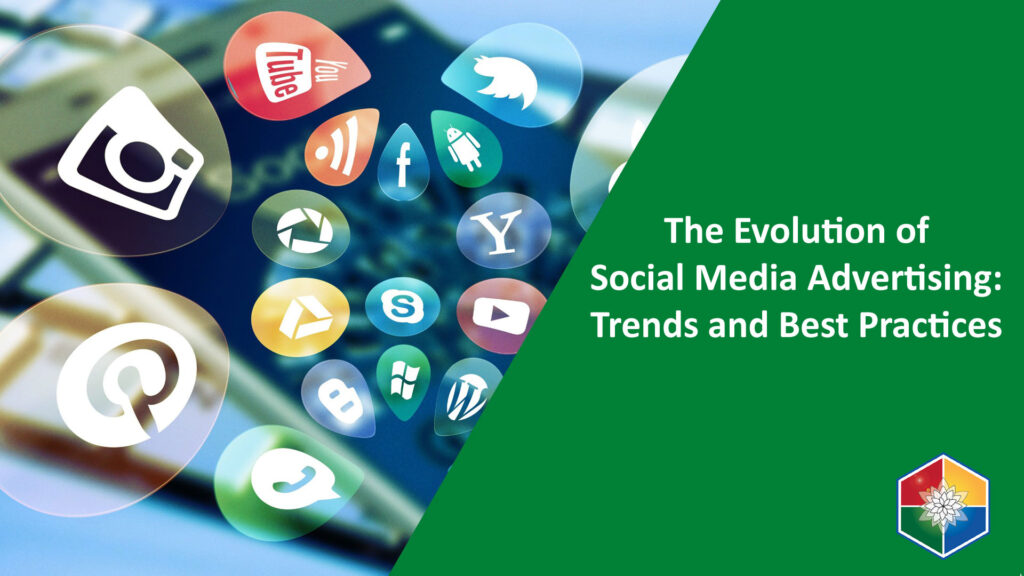
The Evolution of Social Media Advertising: Trends and Best Practices
In the realm of digital marketing, social media advertising stands out as a dynamic and ever-evolving landscape. With its unparalleled reach and targeting capabilities, social media platforms have become indispensable for businesses aiming to connect with their audiences. Over the years, social media advertising has undergone significant transformations, adapting to changing consumer behaviors and technological advancements. In this blog, we’ll explore the evolution of social media advertising, highlighting key trends and best practices that businesses can leverage to maximize their advertising efforts.
The Early Days: Basic Targeting and Engagement
Social media advertising emerged in the early 2000s with platforms like MySpace and Friendster laying the groundwork. Initially, ads were rudimentary, often resembling traditional banner ads with limited targeting options. However, as platforms like Facebook, Twitter, and LinkedIn gained prominence, advertisers began to capitalize on their vast user bases and advanced targeting capabilities. The focus was primarily on building brand awareness and increasing engagement through likes, shares, and comments.
Rise of Data-Driven Advertising
The proliferation of data analytics and user tracking technologies ushered in a new era of social media advertising. Platforms started offering sophisticated targeting options based on demographics, interests, behaviors, and even real-time data. Advertisers could now create highly personalized campaigns tailored to specific audience segments. This shift towards data-driven advertising revolutionized the industry, enabling businesses to achieve better ROI and conversion rates.
Video Dominance and Visual Content
With the advent of high-speed internet and mobile devices, video content became the king of social media. Platforms like YouTube, Instagram, and TikTok witnessed explosive growth, prompting advertisers to embrace video ads as an integral part of their marketing strategies. Video ads proved to be more engaging and memorable, capturing the attention of users scrolling through their feeds. Furthermore, the rise of Stories features across various platforms opened up new avenues for immersive, vertical video advertising.
Influencer Marketing and User-Generated Content
Influencer marketing emerged as a powerful strategy for brands to reach their target audiences authentically. Collaborating with influencers allowed businesses to tap into their followers’ trust and credibility, driving brand awareness and conversions. Additionally, user-generated content gained traction as brands encouraged customers to create and share content related to their products or services. This approach not only fostered a sense of community but also provided valuable social proof for prospective customers.
Native Advertising and Authenticity
As consumers became increasingly wary of traditional advertising, brands shifted towards native advertising – ads that seamlessly blend with the platform’s user experience. Native ads are less disruptive and more likely to resonate with audiences, fostering a sense of authenticity and trust. Whether it’s sponsored content, branded filters, or in-feed ads, the key is to deliver value to users while subtly promoting the brand’s message.
Social Commerce and Shoppable Ads
The integration of e-commerce functionalities directly into social media platforms gave rise to social commerce. Platforms like Instagram and Facebook introduced shoppable posts and ads, allowing users to discover and purchase products without leaving the app. This seamless shopping experience has transformed social media into a powerful sales channel for businesses, driving conversions and revenue. As social commerce continues to evolve, brands must prioritize creating compelling visuals and optimizing their product listings for maximum impact.
Best Practices for Social Media Advertising
In today’s competitive landscape, mastering the art of social media advertising requires a strategic approach and adherence to best practices:
1. Know Your Audience:
Utilize advanced targeting options to identify and reach your ideal customers based on demographics, interests, and behaviors.
2. Compelling Visuals:
Invest in high-quality visuals and creative content that capture attention and communicate your brand message effectively.
3. Consistent Branding:
Maintain a consistent brand voice and aesthetic across all your social media channels to reinforce brand identity and recognition.
4. Engagement and Interaction:
Foster meaningful interactions with your audience by responding to comments, messages, and mentions promptly.
5. Data Analysis and Optimization:
Continuously monitor and analyze the performance of your ads, and optimize them based on key metrics such as click-through rates, conversion rates, and return on ad spend (ROAS).
6. Experimentation and Innovation:
Stay abreast of emerging trends and technologies in social media advertising, and don’t hesitate to experiment with new formats and strategies to stay ahead of the curve.
Conclusion
Social media advertising has come a long way since its inception, evolving into a sophisticated and data-driven ecosystem that offers unparalleled opportunities for businesses to connect with their audiences. By embracing the latest trends and best practices, businesses can unlock the full potential of social media advertising to drive brand awareness, engagement, and conversions.
In conclusion, the evolution of social media advertising continues to reshape the digital marketing landscape, presenting both challenges and opportunities for businesses. By staying agile, innovative, and customer-centric, businesses can harness the power of social media advertising to achieve their marketing objectives and drive sustainable growth.